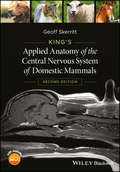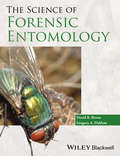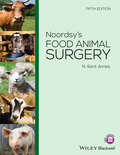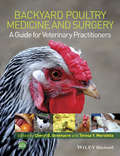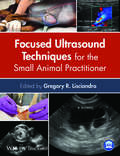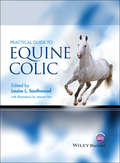- Table View
- List View
Textbook of Hemophilia
by Christine A. Lee Erik E. Berntorp W. Keith Hoots Alan S. Kaufman Nadeen L. Kaufman Elizabeth O. LichtenbergerTextbook of Hemophilia, 3rd edition Edited by Christine A. Lee, MA, MD, DSc, FRCP, FRCPath, FRCOG Emeritus Professor of Haemophilia, University of London, London, UK Erik E. Berntorp, MD, PhD Professor of Coagulation Medicine, Lund University Malmö Centre for Thrombosis and Haemostasis, Skåne University Hospital, Malmö, Sweden W. Keith Hoots, MD Director, Division of Blood Diseases and Resources, National Heart, Lung and Blood Institute National Institutes of Health, Bethesda, MD; Professor of Pediatrics and Internal Medicine, University of Texas Medical School at Houston, Houston, TX, USA Without doubt, Textbook of Hemophilia, 3rd edition is the definitive reference source on all aspects of haemophilia including diagnosis, management and treatment. Edited by three, world-renowned experts on haemophilia, this completely revised resource features chapters written by over 60 international contributors with international expertise in caring for haemophilia patients. Textbook of Hemophilia, 3rd edition Features eight new chapters, covering individualised dosing, vCJD and haemophilia, new drugs in the pipeline, and surgery in inhibitor patients Presents new developments, such as gene therapy Highlights controversial issues and provides advice for everyday clinical questions Represents essential reading for all healthcare professionals involved in the care of those with haemophilia Titles of related interest Hemophilia and Hemostasis: A Case-Based Approach to Management, 2nd Edition Ma, ISBN: 9780470659762 Current and Future Issues in Hemophilia Care Rodriguez-Merchan, ISBN: 9780470670576 www.wiley.com/go/hematology
Textbook of Hemophilia
by Christine A. Lee Erik E. Berntorp W. Keith HootsTextbook of Hemophilia, 3rd edition Edited by Christine A. Lee, MA, MD, DSc, FRCP, FRCPath, FRCOG Emeritus Professor of Haemophilia, University of London, London, UK Erik E. Berntorp, MD, PhD Professor of Coagulation Medicine, Lund University Malmö Centre for Thrombosis and Haemostasis, Skåne University Hospital, Malmö, Sweden W. Keith Hoots, MD Director, Division of Blood Diseases and Resources, National Heart, Lung and Blood Institute National Institutes of Health, Bethesda, MD; Professor of Pediatrics and Internal Medicine, University of Texas Medical School at Houston, Houston, TX, USA Without doubt, Textbook of Hemophilia, 3rd edition is the definitive reference source on all aspects of haemophilia including diagnosis, management and treatment. Edited by three, world-renowned experts on haemophilia, this completely revised resource features chapters written by over 60 international contributors with international expertise in caring for haemophilia patients. Textbook of Hemophilia, 3rd edition Features eight new chapters, covering individualised dosing, vCJD and haemophilia, new drugs in the pipeline, and surgery in inhibitor patients Presents new developments, such as gene therapy Highlights controversial issues and provides advice for everyday clinical questions Represents essential reading for all healthcare professionals involved in the care of those with haemophilia Titles of related interest Hemophilia and Hemostasis: A Case-Based Approach to Management, 2nd Edition Ma, ISBN: 9780470659762 Current and Future Issues in Hemophilia Care Rodriguez-Merchan, ISBN: 9780470670576 www.wiley.com/go/hematology
Cardiovascular Clinical Trials: Putting the Evidence into Practice
by Marcus Flather Deepak Bhatt Tobias GeislerThe pace of therapeutic advances in the treatment of cardiovascular diseases is rapid, and new clinically-relevant information appears with such frequency that it can be extremely challenging for clinicians to keep up. Still, knowledge and interpretation of major clinical trials is crucial for the range of clinicians who manage cardiovascular patients, especially since important trial evidence often needs to be implemented soon after it is published. Confidently apply gold standard treatment for 10 of the most critical areas of cardiology Written by an international team of experts, Cardiovascular Clinical Trials: Putting the Evidence into Practice: Provides a succinct overview of recent major clinical trials - the gold standard for all medical treatment - across all the major cardiovascular subspecialties, to ensure you’re up-to-date on the most critical findings Guides cardiology trainees and clinicians on how cardiovascular clinical trials are designed and conducted, including statistical methodology, so you can conduct and/or appraise future trials yourself Addresses methodology as well as clinical effectiveness Offers evidence-based assessments on the most effective treatments and authoritative clinical information on management of the conditions so you can confidently apply what you learn Physicians, surgeons, specialist nurses – any clinician seeking an accessible resource for designing and conducting cardiovascular trials and then translating their results into practice will appreciate this book’s clear guidance and succinct and practical approach.
Cardiovascular Clinical Trials: Putting the Evidence into Practice
by Marcus Flather Deepak L. Bhatt Tobias GeislerThe pace of therapeutic advances in the treatment of cardiovascular diseases is rapid, and new clinically-relevant information appears with such frequency that it can be extremely challenging for clinicians to keep up. Still, knowledge and interpretation of major clinical trials is crucial for the range of clinicians who manage cardiovascular patients, especially since important trial evidence often needs to be implemented soon after it is published. Confidently apply gold standard treatment for 10 of the most critical areas of cardiology Written by an international team of experts, Cardiovascular Clinical Trials: Putting the Evidence into Practice: Provides a succinct overview of recent major clinical trials - the gold standard for all medical treatment - across all the major cardiovascular subspecialties, to ensure you’re up-to-date on the most critical findings Guides cardiology trainees and clinicians on how cardiovascular clinical trials are designed and conducted, including statistical methodology, so you can conduct and/or appraise future trials yourself Addresses methodology as well as clinical effectiveness Offers evidence-based assessments on the most effective treatments and authoritative clinical information on management of the conditions so you can confidently apply what you learn Physicians, surgeons, specialist nurses – any clinician seeking an accessible resource for designing and conducting cardiovascular trials and then translating their results into practice will appreciate this book’s clear guidance and succinct and practical approach.
Electrophysiologic Testing
by Richard N. Fogoros MDWhen you need to know how to order, perform and evaluate core EP tests and optimize patient care, turn to the one, updated resource you can count on for clear and accessible guidance: Electrophysiologic Testing, 5th Edition. Electrophysiological Testing has become the most trusted resource for those learning or mastering EP testing, from students, nurse and technicians to residents, cardiology fellows, primary care physicians and cardiologists. Dr Fogoros's singular approach clarifies the role of electrophysiology in the evaluation of cardiac arrhythmias and provides clear, easy-to-understand summaries of complex topics. The result is a book that provides just what you need – not more – to successfully test for abnormal heart rhythms using today’s most common devices and techniques. What's new? Completely revised to update the data from recent randomized trials on ablation, ICDs and CRT Expanded information on the CARTO system A chapter on dysautomia Plus an all-new section of self-assessment questions to help you master essential concepts and test your recall of key information
Electrophysiologic Testing
by Richard N. Fogoros MDWhen you need to know how to order, perform and evaluate core EP tests and optimize patient care, turn to the one, updated resource you can count on for clear and accessible guidance: Electrophysiologic Testing, 5th Edition. Electrophysiological Testing has become the most trusted resource for those learning or mastering EP testing, from students, nurse and technicians to residents, cardiology fellows, primary care physicians and cardiologists. Dr Fogoros's singular approach clarifies the role of electrophysiology in the evaluation of cardiac arrhythmias and provides clear, easy-to-understand summaries of complex topics. The result is a book that provides just what you need – not more – to successfully test for abnormal heart rhythms using today’s most common devices and techniques. What's new? Completely revised to update the data from recent randomized trials on ablation, ICDs and CRT Expanded information on the CARTO system A chapter on dysautomia Plus an all-new section of self-assessment questions to help you master essential concepts and test your recall of key information
Morson and Dawson's Gastrointestinal Pathology
by Neil A. Shepherd Bryan F. Warren Geraint T. Williams Joel K. Greenson Gregory Y. Lauwers Marco R. NovelliMorson and Dawson’s Gastrointestinal Pathology 5th Edition Edited by Neil A. Shepherd, DM, FRCPath, Gloucestershire Cellular Pathology Laboratory, Cheltenham, UK; Bryan F. Warren, MB, ChB, FRCP (London), FRCPath, John Radcliffe Hospital, Oxford, UK; Geraint T. Williams, OBE, BSc, MD, MRCR, FRCP (London), FRCPath, FMedSci, Cardiff University, Cardiff, UK; Joel K. Greenson, MD, University of Michigan Medical School, Ann Arbor, MI, USA; Gregory Y. Lauwers, MD, Massachusetts General Hospital and Harvard Medical School, Boston, MA, USA; and Marco R. Novelli, MB, ChB, PhD, FRCPath, University College Hospital, London, UK Emphasizing the important role the gastrointestinal pathologist now plays in patient management, Morson and Dawson’s Gastrointestinal Pathology, 5th Edition, is a comprehensive resource for both training and practice. This revision of a “gold standard” textbook reflects current practice, where the abundance of surgical specimens and the revolution in endoscopy has made virtually the entire gastrointestinal tract accessible to biopsy. Generations of practitioners valued Morson and Dawson’s candid guidance, highly readable text, and abundant, high-quality illustrations. This edition preserves those popular features and, to add an international dimension, now includes authors from North America, the European continent, Asia, and Australia. Authors write on their areas of expertise, with chapters organized into seven major parts: Oesophagus Stomach Small Intestine Appendix Large Intestine The Anal Region Peritoneum Each part opens with a chapter on normal anatomy, dissection, and relevant histology. The following chapters describe the morphology, pathogenesis, and aetiology of specific disorders and incorporate developments in molecular pathology and immunohistochemistry. A concluding chapter in each part summarizes miscellaneous conditions of that organ. More than 700 colour images throughout the text illustrate the discussion. An associated website contains all the figures for easy downloading into presentations. With outstanding contributions from the world’s leading gastrointestinal pathologists and a wealth of new information, Morson and Dawson’s Gastrointestinal Pathology, 5th Edition, will serve a new generation of gastrointestinal pathologists, gastroenterologists, and pathologists as the definitive reference for the field.
Morson and Dawson's Gastrointestinal Pathology
by Neil A. Shepherd Bryan F. Warren Geraint T. Williams Joel K. Greenson Gregory Y. Lauwers Marco R. NovelliMorson and Dawson’s Gastrointestinal Pathology 5th Edition Edited by Neil A. Shepherd, DM, FRCPath, Gloucestershire Cellular Pathology Laboratory, Cheltenham, UK; Bryan F. Warren, MB, ChB, FRCP (London), FRCPath, John Radcliffe Hospital, Oxford, UK; Geraint T. Williams, OBE, BSc, MD, MRCR, FRCP (London), FRCPath, FMedSci, Cardiff University, Cardiff, UK; Joel K. Greenson, MD, University of Michigan Medical School, Ann Arbor, MI, USA; Gregory Y. Lauwers, MD, Massachusetts General Hospital and Harvard Medical School, Boston, MA, USA; and Marco R. Novelli, MB, ChB, PhD, FRCPath, University College Hospital, London, UK Emphasizing the important role the gastrointestinal pathologist now plays in patient management, Morson and Dawson’s Gastrointestinal Pathology, 5th Edition, is a comprehensive resource for both training and practice. This revision of a “gold standard” textbook reflects current practice, where the abundance of surgical specimens and the revolution in endoscopy has made virtually the entire gastrointestinal tract accessible to biopsy. Generations of practitioners valued Morson and Dawson’s candid guidance, highly readable text, and abundant, high-quality illustrations. This edition preserves those popular features and, to add an international dimension, now includes authors from North America, the European continent, Asia, and Australia. Authors write on their areas of expertise, with chapters organized into seven major parts: Oesophagus Stomach Small Intestine Appendix Large Intestine The Anal Region Peritoneum Each part opens with a chapter on normal anatomy, dissection, and relevant histology. The following chapters describe the morphology, pathogenesis, and aetiology of specific disorders and incorporate developments in molecular pathology and immunohistochemistry. A concluding chapter in each part summarizes miscellaneous conditions of that organ. More than 700 colour images throughout the text illustrate the discussion. An associated website contains all the figures for easy downloading into presentations. With outstanding contributions from the world’s leading gastrointestinal pathologists and a wealth of new information, Morson and Dawson’s Gastrointestinal Pathology, 5th Edition, will serve a new generation of gastrointestinal pathologists, gastroenterologists, and pathologists as the definitive reference for the field.
King's Applied Anatomy of the Central Nervous System of Domestic Mammals
by Geoff SkerrittAn update of a classic student text unlocking the mystery of veterinary neurology and neuroanatomy King's Applied Anatomy of the Central Nervous System of Domestic Mammals, Second Edition is an ideal introduction for those with no prior knowledge of the central nervous system. Presented in a logical and accessible manner, readers can quickly comprehend the essential principles of how the central nervous system is constructed, the way it works and how to recognise damaged components. By blending descriptive anatomy with clinical neurology, the text offers a unique approach – explaining the structure and function of the central nervous system while highlighting the relevance to clinical practice. Revised and updated to cover the latest clinical developments, this second edition includes additional content on electrodiagnostic methods, stem cell transplantation and advanced imaging. The book also comes with a companion website featuring self-assessment questions, label the diagram exercises, and downloadable figures to aid further learning. An excellent introductory text for veterinary students, King's Applied Anatomy of the Central Nervous System of Domestic Mammals, Second Edition is also an invaluable reference for trainee veterinary neurology specialists as well as veterinary practitioners with a particular interest in neurology.
King's Applied Anatomy of the Central Nervous System of Domestic Mammals
by Geoff SkerrittAn update of a classic student text unlocking the mystery of veterinary neurology and neuroanatomy King's Applied Anatomy of the Central Nervous System of Domestic Mammals, Second Edition is an ideal introduction for those with no prior knowledge of the central nervous system. Presented in a logical and accessible manner, readers can quickly comprehend the essential principles of how the central nervous system is constructed, the way it works and how to recognise damaged components. By blending descriptive anatomy with clinical neurology, the text offers a unique approach – explaining the structure and function of the central nervous system while highlighting the relevance to clinical practice. Revised and updated to cover the latest clinical developments, this second edition includes additional content on electrodiagnostic methods, stem cell transplantation and advanced imaging. The book also comes with a companion website featuring self-assessment questions, label the diagram exercises, and downloadable figures to aid further learning. An excellent introductory text for veterinary students, King's Applied Anatomy of the Central Nervous System of Domestic Mammals, Second Edition is also an invaluable reference for trainee veterinary neurology specialists as well as veterinary practitioners with a particular interest in neurology.
Glial Physiology and Pathophysiology
by Alexei Verkhratsky Arthur Morgan ButtGlial Physiology and Pathophysiology provides a comprehensive, advanced text on the biology and pathology of glial cells.Coverae includes: the morphology and interrelationships between glial cells and neurones in different parts of the nervous systems the cellular physiology of the different kinds of glial cells the mechanisms of intra- and inter-cellular signalling in glial networks the mechanisms of glial-neuronal communications the role of glial cells in synaptic plasticity, neuronal survival and development of nervous system the cellular and molecular mechanisms of metabolic neuronal-glial interactions the role of glia in nervous system pathology, including pathology of glial cells and associated diseases - for example, multiple sclerosis, Alzheimer's, Alexander disease and Parkinson's Neuroglia oversee the birth and development of neurones, the establishment of interneuronal connections (the 'connectome'), the maintenance and removal of these inter-neuronal connections, writing of the nervous system components, adult neurogenesis, the energetics of nervous tissue, metabolism of neurotransmitters, regulation of ion composition of the interstitial space and many, many more homeostatic functions. This book primes the reader towards the notion that nervous tissue is not divided into more important and less important cells. The nervous tissue functions because of the coherent and concerted action of many different cell types, each contributing to an ultimate output. This reaches its zenith in humans, with the creation of thoughts, underlying acquisition of knowledge, its analysis and synthesis, and contemplating the Universe and our place in it. An up-to-date and fully referenced text on the most numerous cells in the human brain Detailed coverage of the morphology and interrelationships between glial cells and neurones in different parts of the nervous system Describes the role og glial cells in neuropathology Focus boxes highlight key points and summarise important facts Companion website with downloadable figures and slides
Glial Physiology and Pathophysiology
by Alexei Verkhratsky Arthur ButtGlial Physiology and Pathophysiology provides a comprehensive, advanced text on the biology and pathology of glial cells.Coverae includes: the morphology and interrelationships between glial cells and neurones in different parts of the nervous systems the cellular physiology of the different kinds of glial cells the mechanisms of intra- and inter-cellular signalling in glial networks the mechanisms of glial-neuronal communications the role of glial cells in synaptic plasticity, neuronal survival and development of nervous system the cellular and molecular mechanisms of metabolic neuronal-glial interactions the role of glia in nervous system pathology, including pathology of glial cells and associated diseases - for example, multiple sclerosis, Alzheimer's, Alexander disease and Parkinson's Neuroglia oversee the birth and development of neurones, the establishment of interneuronal connections (the 'connectome'), the maintenance and removal of these inter-neuronal connections, writing of the nervous system components, adult neurogenesis, the energetics of nervous tissue, metabolism of neurotransmitters, regulation of ion composition of the interstitial space and many, many more homeostatic functions. This book primes the reader towards the notion that nervous tissue is not divided into more important and less important cells. The nervous tissue functions because of the coherent and concerted action of many different cell types, each contributing to an ultimate output. This reaches its zenith in humans, with the creation of thoughts, underlying acquisition of knowledge, its analysis and synthesis, and contemplating the Universe and our place in it. An up-to-date and fully referenced text on the most numerous cells in the human brain Detailed coverage of the morphology and interrelationships between glial cells and neurones in different parts of the nervous system Describes the role og glial cells in neuropathology Focus boxes highlight key points and summarise important facts Companion website with downloadable figures and slides
The Science of Forensic Entomology
by David B. Rivers Gregory A. DahlemThe Science of Forensic Entomology builds a foundation of biological and entomological knowledge that equips the student to be able to understand and resolve questions concerning the presence of specific insects at a crime scene, in which the answers require deductive reasoning, seasoned observation, reconstruction and experimentation—features required of all disciplines that have hypothesis testing at its core. Each chapter addresses topics that delve into the underlying biological principles and concepts relevant to the insect biology that forms the bases for using insects in matters of legal importance. The book is more than an introduction to forensic entomology as it offers in depth coverage of non-traditional topics, including the biology of maggot masses, temperature tolerances of necrophagous insects; chemical attraction and communication; reproductive strategies of necrophagous flies; archaeoentomology, and use of insects in modern warfare (terrorism). As such it will enable advanced undergraduate and postgraduate students the opportunity to gain a sound knowledge of the principles, concepts and methodologies necessary to use insects and other arthropods in a wide range of legal matters.
The Science of Forensic Entomology
by David B. Rivers Gregory A. DahlemThe Science of Forensic Entomology builds a foundation of biological and entomological knowledge that equips the student to be able to understand and resolve questions concerning the presence of specific insects at a crime scene, in which the answers require deductive reasoning, seasoned observation, reconstruction and experimentation—features required of all disciplines that have hypothesis testing at its core. Each chapter addresses topics that delve into the underlying biological principles and concepts relevant to the insect biology that forms the bases for using insects in matters of legal importance. The book is more than an introduction to forensic entomology as it offers in depth coverage of non-traditional topics, including the biology of maggot masses, temperature tolerances of necrophagous insects; chemical attraction and communication; reproductive strategies of necrophagous flies; archaeoentomology, and use of insects in modern warfare (terrorism). As such it will enable advanced undergraduate and postgraduate students the opportunity to gain a sound knowledge of the principles, concepts and methodologies necessary to use insects and other arthropods in a wide range of legal matters.
Noordsy's Food Animal Surgery
by N. Kent AmesNoordsy’s Food Animal Surgery, Fifth Edition is a fully updated new edition of the classic field manual on surgical techniques in cattle, goats, sheep, and pigs. Designed for easy, fast access in the field, information is presented using a concise outline style with information boxes, tables, drawings, and photographs to highlight and illustrate key points Noordsy’s Food Animal Surgery is an ideal reference for veterinary students and clinicians seeing food animal patients. Beginning with chapters on general surgical considerations, restraint, and anesthesia, the book’s main focus is on step-by-step procedures for specific surgical techniques. The Fifth Edition has been thoroughly updated throughout to provide a current resource, with additional information on welfare, pain management, and anesthesia. Noordsy’s Food Animal Surgery is an essential purchase for practitioners and students wanting to develop or refresh their surgical skills.
Backyard Poultry Medicine and Surgery: A Guide for Veterinary Practitioners
by Cheryl B. Greenacre Teresa Y. MorishitaBackyard Poultry Medicine and Surgery is a practical resource offering guidance on developing diagnostic and treatment plans for individual companion poultry or small flocks. Organized by body system to aid in developing a differential diagnosis list for common presenting signs, the book provides all the information clinicians need to effectively treat backyard poultry. Written by experts from both the commercial poultry field and the companion avian field, the book provides thorough coverage of both common and less common diseases of backyard chickens, ducks, and other poultry. The book begins with introductory chapters covering general information, an overview of US laws, and basic husbandry concerns, then moves into specific disease chapters organized by system. The book takes an individual medicine perspective throughout, with photographs, radiographs, and histopathological photomicrographs to illustrate principles and diseases. Backyard Poultry Medicine and Surgery is an invaluable guide to diseases and treatments for any practitioners treating backyard poultry.
Noordsy's Food Animal Surgery
by N. Kent AmesNoordsy’s Food Animal Surgery, Fifth Edition is a fully updated new edition of the classic field manual on surgical techniques in cattle, goats, sheep, and pigs. Designed for easy, fast access in the field, information is presented using a concise outline style with information boxes, tables, drawings, and photographs to highlight and illustrate key points Noordsy’s Food Animal Surgery is an ideal reference for veterinary students and clinicians seeing food animal patients. Beginning with chapters on general surgical considerations, restraint, and anesthesia, the book’s main focus is on step-by-step procedures for specific surgical techniques. The Fifth Edition has been thoroughly updated throughout to provide a current resource, with additional information on welfare, pain management, and anesthesia. Noordsy’s Food Animal Surgery is an essential purchase for practitioners and students wanting to develop or refresh their surgical skills.
Backyard Poultry Medicine and Surgery: A Guide for Veterinary Practitioners
by Cheryl B Greenacre Teresa Y MorishitaBackyard Poultry Medicine and Surgery is a practical resource offering guidance on developing diagnostic and treatment plans for individual companion poultry or small flocks. Organized by body system to aid in developing a differential diagnosis list for common presenting signs, the book provides all the information clinicians need to effectively treat backyard poultry. Written by experts from both the commercial poultry field and the companion avian field, the book provides thorough coverage of both common and less common diseases of backyard chickens, ducks, and other poultry. The book begins with introductory chapters covering general information, an overview of US laws, and basic husbandry concerns, then moves into specific disease chapters organized by system. The book takes an individual medicine perspective throughout, with photographs, radiographs, and histopathological photomicrographs to illustrate principles and diseases. Backyard Poultry Medicine and Surgery is an invaluable guide to diseases and treatments for any practitioners treating backyard poultry.
Focused Ultrasound Techniques for the Small Animal Practitioner
by Gregory R. LisciandroFocused Ultrasound Techniques for the Small Animal Practitioner offers a highly practical guide to incorporating abbreviated ultrasound exams into the veterinary practice. Focused point-of-care exams are an effective way to quickly detect conditions and complications not readily apparent through the physical exam, laboratory diagnostics, or radiographic findings. Encompassing all the information needed to begin performing these techniques, Focused Ultrasound Techniques for the Small Animal Practitioner is a useful tool for improving patient outcomes in clinical practice. Covering focused exams in all body systems, the book also outlines the principles of interventional radiology, medical documentation, and the basic fundamentals of using an ultrasound machine. A companion website offers 87 video clips of AFAST, TFAST, and Vet Blue examinations with normal, abnormal, and incidental findings at www.wiley.com/go/lisciandro/ultrasound. Focused Ultrasound Techniques for the Small Animal Practitioner is an essential purchase for veterinary practitioners and specialists wanting to implement these techniques in their veterinary practice.
Focused Ultrasound Techniques for the Small Animal Practitioner
by Gregory R. LisciandroFocused Ultrasound Techniques for the Small Animal Practitioner offers a highly practical guide to incorporating abbreviated ultrasound exams into the veterinary practice. Focused point-of-care exams are an effective way to quickly detect conditions and complications not readily apparent through the physical exam, laboratory diagnostics, or radiographic findings. Encompassing all the information needed to begin performing these techniques, Focused Ultrasound Techniques for the Small Animal Practitioner is a useful tool for improving patient outcomes in clinical practice. Covering focused exams in all body systems, the book also outlines the principles of interventional radiology, medical documentation, and the basic fundamentals of using an ultrasound machine. A companion website offers 87 video clips of AFAST, TFAST, and Vet Blue examinations with normal, abnormal, and incidental findings at www.wiley.com/go/lisciandro/ultrasound. Focused Ultrasound Techniques for the Small Animal Practitioner is an essential purchase for veterinary practitioners and specialists wanting to implement these techniques in their veterinary practice.
Forensic Biomechanics (Developments in Forensic Science)
by Jules Kieser Michael Taylor Debra CarrBiomechanics is the application of mechanical principles to living organisms, and it is one of the most exciting and fastest growing research areas. In forensic science, it is biomechanics that explains trauma to the body at a crime scene or the fracture of fibers and textiles, and helps interpret blood spatter. Forensic Biomechanics is a comprehensive overview of the role of biomechanics in forensics. Well-illustrated with real-life case studies, and using a multidisciplinary approach, this unique book is an invaluable reference for practicing forensic scientists, lawyers, and researchers.
Forensic Biomechanics (Developments in Forensic Science)
by Jules Kieser Michael Taylor Debra CarrBiomechanics is the application of mechanical principles to living organisms, and it is one of the most exciting and fastest growing research areas. In forensic science, it is biomechanics that explains trauma to the body at a crime scene or the fracture of fibers and textiles, and helps interpret blood spatter. Forensic Biomechanics is a comprehensive overview of the role of biomechanics in forensics. Well-illustrated with real-life case studies, and using a multidisciplinary approach, this unique book is an invaluable reference for practicing forensic scientists, lawyers, and researchers.
Practical Guide to Equine Colic
by Joanne FehrPractical Guide to Equine Colic takes a step-by-step clinical approach to the medical management of this common condition. Covering colic management and treatment from the veterinarian’s first involvement through referral, surgical intervention, and long-term recovery, the book offers practical advice on managing a colic case. Designed for easy navigation, chapters are brief and fully cross-referenced, allowing the reader to quickly find and apply information in the practice setting. The book incorporates key points, checklists, clinical tips, step-by-step illustrations, and case examples, emphasizing clinically relevant information throughout and referencing the most applicable and up-to-date literature. A companion website offers clinical cases, quizzes, and videos at www.wiley.com/go/southwood. Practical Guide to Equine Colic is an ideal resource for daily use in treating horses with colic, appealing to students, equine practitioners, and specialists alike.
Practical Guide to Equine Colic
by Joanne FehrPractical Guide to Equine Colic takes a step-by-step clinical approach to the medical management of this common condition. Covering colic management and treatment from the veterinarian’s first involvement through referral, surgical intervention, and long-term recovery, the book offers practical advice on managing a colic case. Designed for easy navigation, chapters are brief and fully cross-referenced, allowing the reader to quickly find and apply information in the practice setting. The book incorporates key points, checklists, clinical tips, step-by-step illustrations, and case examples, emphasizing clinically relevant information throughout and referencing the most applicable and up-to-date literature. A companion website offers clinical cases, quizzes, and videos at www.wiley.com/go/southwood. Practical Guide to Equine Colic is an ideal resource for daily use in treating horses with colic, appealing to students, equine practitioners, and specialists alike.
Clinical Sports Psychiatry: An International Perspective
by David A. Baron Claudia L. Reardon Steven H. BaronThis book has it all - written by national and international experts and edited by world authorities, it is the first book on sport psychiatry in over a decade. Dealing with psychopathology, mental health problems and clinical management, it differs markedly from sports psychology books that focus on performance issues. Eating disorders, exercise addiction, drug abuse are all problems that are seen in 'everyday' athletes, not just elite performers. This book shows how to help. This text covers the most important topics in contemporary sports psychiatry/psychology from an international perspective. Chapter authors are experts in the field and global leaders in the related professional organizations, including current and past Presidents/Chairs of the International Society for Sports Psychiatry and of the World Psychiatric Association Section on Exercise and Sports Psychiatry. Authors are mainly psychiatrists: the rest are PhD sport psychologists. The book comprises representative chapter authors from around the world, to an extent unprecedented in this topic. The authors and editors are well-informed in global perspectives, e.g., having served as consultants to numerous Olympic teams, in addition to service on the International Society for Sports Psychiatry's Board of Directors. Specifically, this book covers four main categories of topics: 1) mental health challenges faced by athletes (including substance use disorders, exercise addiction, eating disorders, depression, suicide, and concussion), 2) treatment approaches and therapeutic issues with athletes (including different types of psychotherapy for psychiatric disorders, psychotherapeutic performance enhancement approaches, transference and countertransference issues, achievement by proxy, psychotherapeutic issues as applied to a couple of sports that are played around the world, and use of psychiatric medications in athletes), 3) psychosocial issues affecting athletes (including sexual harassment and abuse, cultural issues, and ethics issues), and 4) the field of sports psychiatry (including work within one common sports psychiatry practice setting, and current status of and challenges in the field of sports psychiatry). There is a growing need for this book. Performance-enhancing drugs, use of psychotropics in impaired athletes, head trauma, sexual abuse, eating disorders, ethics, and depression and suicide in athletes, are just a few of the timely subjects addressed in this text. This is the only comprehensive reference available for those working in the field (or merely interested in it) to consult for current information on these topics. The existing sports psychology texts all focus on performance issues, with little, if any, attention paid to these areas of clinical significance. The book addresses the core differences between sports psychiatry and sports psychology, as well as the areas of overlap. Emphasis is placed on how the disciplines should work together in diagnosing and treating athletes dealing with emotional stress and psychopathology. Chapters include case examples and specific goals listed at the beginning, along with tables and graphs to highlight key concepts.




